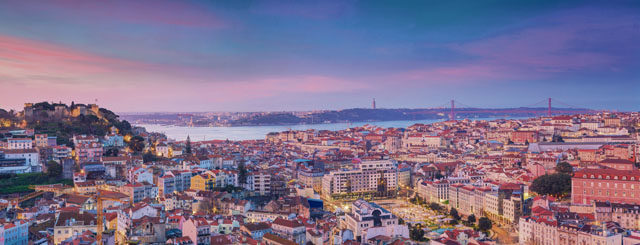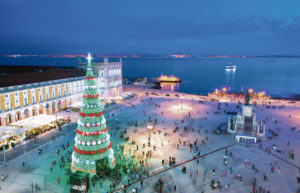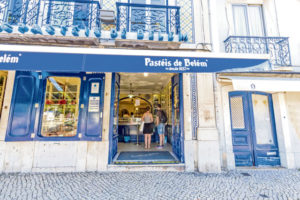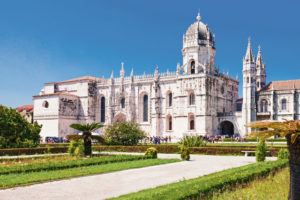
Lisbon in December was love at first sight. As our taxi plunged toward the city’s heart, a tangerine setting sun transformed palm trees to black silhouettes while evening lights blinked to life. Clean shopfronts gleamed with tile, textile, Ronaldo jerseys, Messi jerseys, gelato counters, kebap stands and a thousand other wondrous things.

When we reached central Lisbon, the towering white columns of the famous National Theatre sparkled with Christmas lights. Our family of five drifted across the street, to Rossio Square, and into a ginger-scented cluster of wooden huts and temporary pines: we had stumbled upon a Christmas market. Like a child, I wandered toward a candy stand and handed a bag of dark chocolate to a cashier. When she spoke to me in Portuguese, I understood nothing. A thrill raced through me. This was something new.
As we were to discover during the next few days, Lisbon holds a remarkable blend of history, music, art, and culture. Crowds are scarce, prices are reasonable, the wine is bold, children are welcomed, English is widely spoken, and the desserts are sublime.
And in terms of doing cool stuff? You’ve got options.
Incredible buildings abound. The Castelo de São Jorge towers above Lisbon, is brilliantly lighted at night, and allows you to share space with strutting peacocks while surveying the city and harbor. The small town of Sintra is a short train ride outside of Lisbon, and is absolutely worth a day trip to visit the colorful Palácio da Pena and famous thousand-year-old Castelo dos Mourous.
Lisbon is also one of the most walkable cities in Europe, and has a variety of fascinating neighborhoods. Wandering the Alfama district — which is a maze of medieval alleys, fado bars, restaurants, and orange trees growing out of stone walkways — is like stepping into the age of explorers. Alfama stands in sharp contrast to the nearby Baixa district, where wide boulevards contain chic shops and fine restaurants.

If you want history, the Gulbenkian Museum houses a comprehensive and accessible collection that stretches from ancient Greece to the twentieth century. Or you can wander through Jerónimos Monastery and wind past tourists snapping photos of psychadelic stained glass until you reach Vasco da Gama’s tomb. As with many other places in Lisbon, you can stand face-to-face with the past and marvel at its resonance with the present.
Though Lisbon in winter can be rainy, visitors can also be treated to a week’s worth of sun and warmth — like we were. Good weather wasn’t a gift that we took lightly. When it was time to leave, I looked at my children and said, “Take a deep breath, kids. We won’t be smelling anything like this for a long time.”
I was talking about the crisp, clean smell of a sunny winter morning somewhere warm, like southern California or Florida. But the children nodded earnestly and took deep breaths. They know how it is. Winter in Europe rarely gets this good.

Four Lisbon Essentials
- Você fala inglês? Or, “Do you speak English?” in Portuguese. An essential question for seeking information or assistance. Though English is widely spoken, leading with the local language is a helpful practice.
- Viva Viagem card: If you’re planning to be in Lisbon without a car for more than a day or two, consider getting this public transportation pass. It is reloadable, and allows access to Lisbon’s excellent system of trains, buses, subways, and trolleys. Learn more at www.metrolisboa.pt/en/buy/viva-viagem-card.
- Fado: Literally meaning “destiny” or “fate,” fado is a sparse, beautifully melancholy form of traditional Portuguese music that has roots in lamenting sailors lost at sea. Live music can be found in fado bars abound in Lisbon, which are well worth a visit.
- Pastéis de Belém: Before you visit Jéronimos Monastery, stop at this world-famous eatery and enjoy a freshly-made pastel de Belém (or three). Your soul (and stomach) will thank you for it. Learn more at pasteisdebelem.pt/en.


